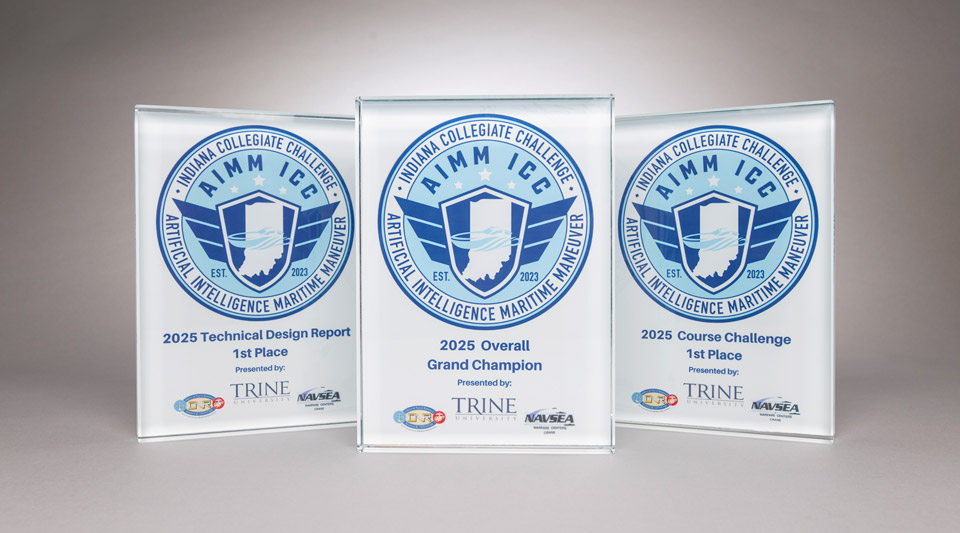For the second year in a row, a team of Notre Dame engineering students was named Overall Grand Champion at the 2025 Artificial Intelligence Maritime Maneuver Indiana Collegiate Challenge (AIMM ICC).
This year, the team stood out as the only one to complete the course with a fully autonomous low-profile vessel. The team also took first place for its technical report and performance in the course challenge.
The event, a collaboration between Trine University and Crane NSWC, took place at Pokagon State Park in Angola, Indiana, April 11-12.
Teams from five Indiana universities used artificial intelligence to pilot a low-profile vessel (LPV). LPVs evade radar detection by staying close to the water’s surface, making them ideal for carrying out law enforcement and security missions requiring stealth and maneuverability.
Notre Dame’s winning entry featured an LPV with a robust autonomous navigation system, enabling it to complete tasks such as navigating gates, dodging obstacles, evading adversarial sensors, identifying targets, deploying data collection systems, launching a trackable marker (buoy, flag, etc.), recovering a floating sample, receiving data, and returning to base.


The team’s integration of sensors, computing hardware, and custom software algorithms allowed the LPV to perform these complex surveillance-related tasks with precision and reliability.
“Our system was designed for full autonomy from the start,” said senior aerospace and mechanical engineering major Aidan Francfort. “Integrating all components into one seamless platform required an incredible level of coordination and innovation.”
To maintain the required low profile, last year’s LPV relied on 1000 pounds of sand ballast, a labor-intensive solution. This year, the team aimed to improve efficiency by designing a water ballast system.

“Instead of the manual handling of sandbags, we planned to use a pump to flood a dedicated compartment within the vessel,” said freshman electrical engineering major Salvador Wienecke. “I was responsible for waterproofing a compartment—a challenging process that included routing waterproof cable and applying a spray-on sealant.”
Despite the team’s efforts, however, persistent leakage problems forced them to use pre-made weighted plates for ballast during the competition.
The team’s advisor, Enes Aydin, Learning Center Manager at Notre Dame’s Engineering Innovation Hub, credited the team’s success with their collaborative, multidisciplinary approach and strong problem-solving under pressure.

Notre Dame’s AIMM team included both veterans and newcomers: senior mechanical engineering major Aidan Francfort; junior computer science and engineering majors Ryan Paillet, Manny Hamer and Allen Uy; freshmen electrical engineering majors Salvador Wienecke, Ray Yang and Aria Meyer.
The team’s goals for next year include repairing their nearly three-year-old LPV and achieving full autonomy even in rough water environments.
—Karla Cruise, Notre Dame Engineering; photos not otherwise credited by Wes Evard, Notre Dame Engineering
